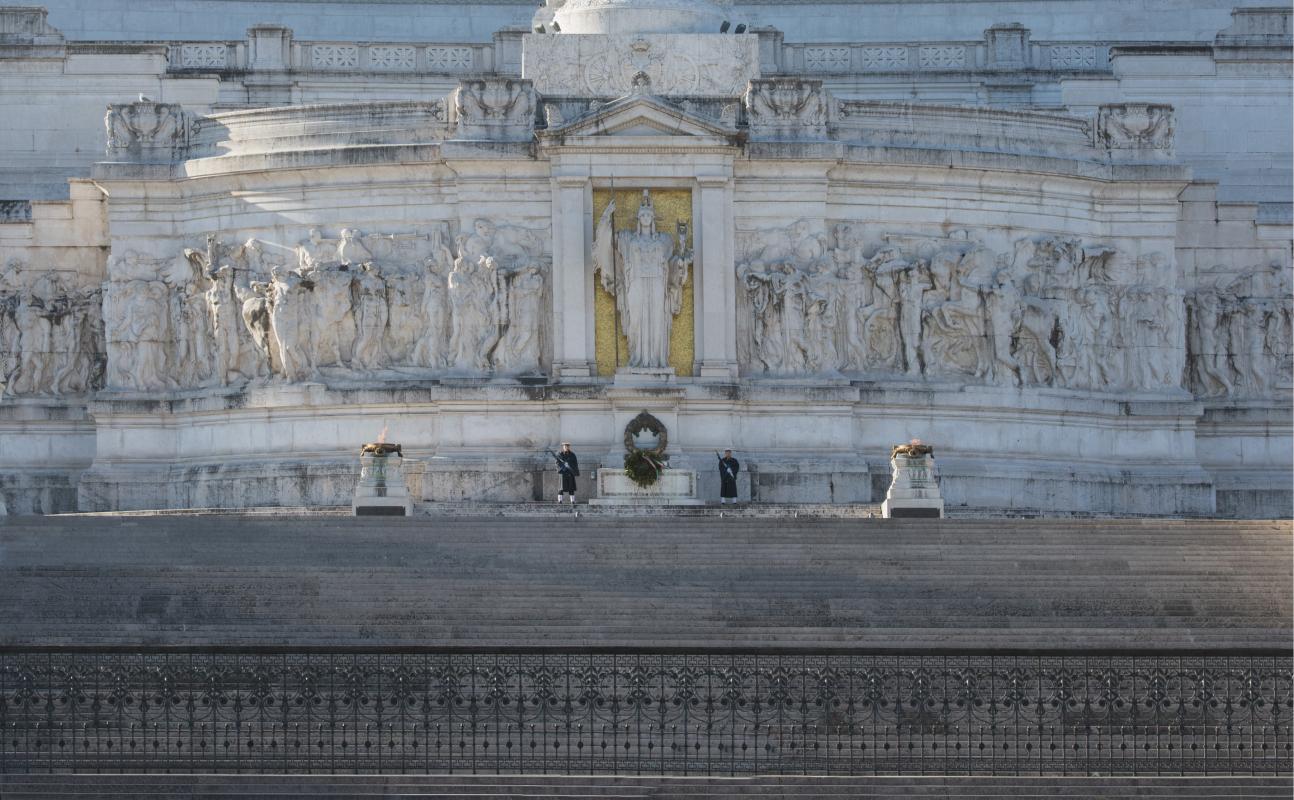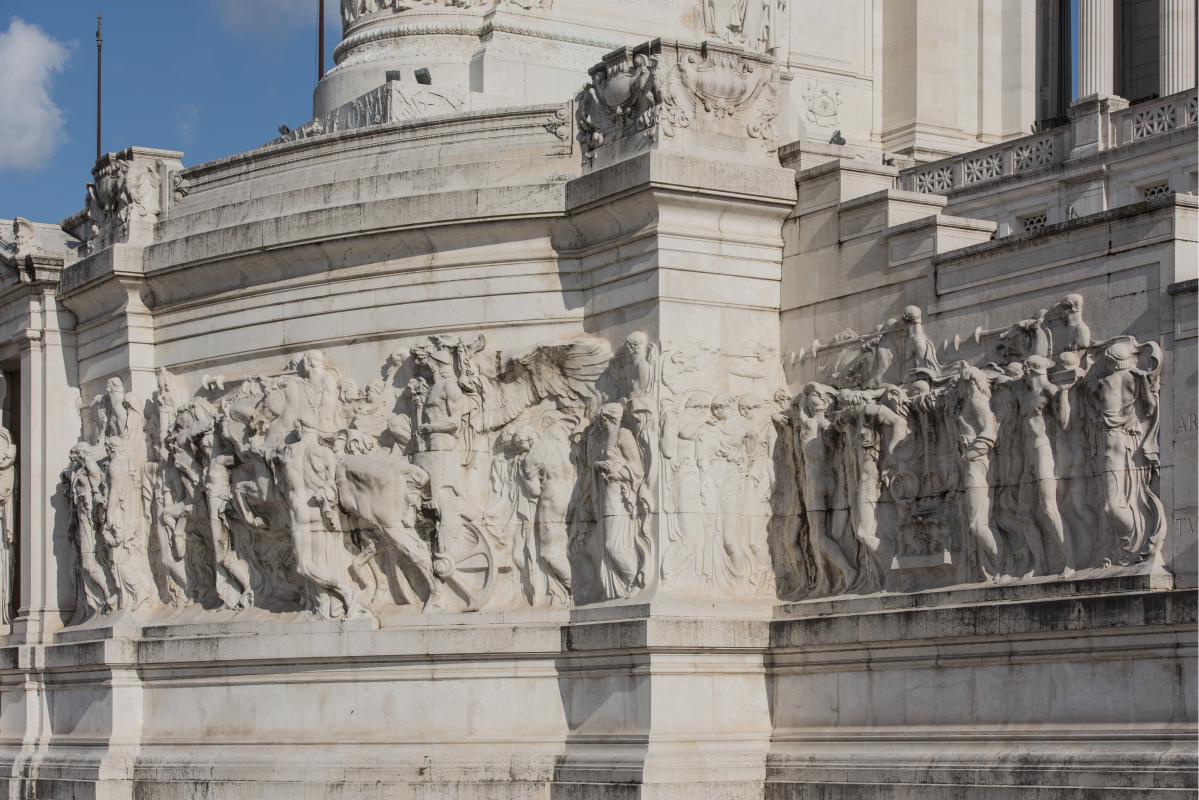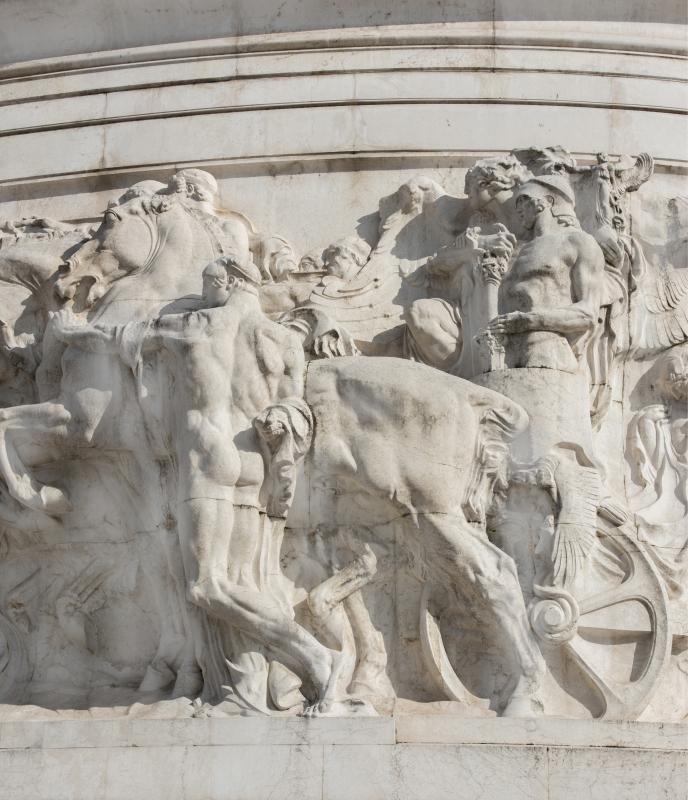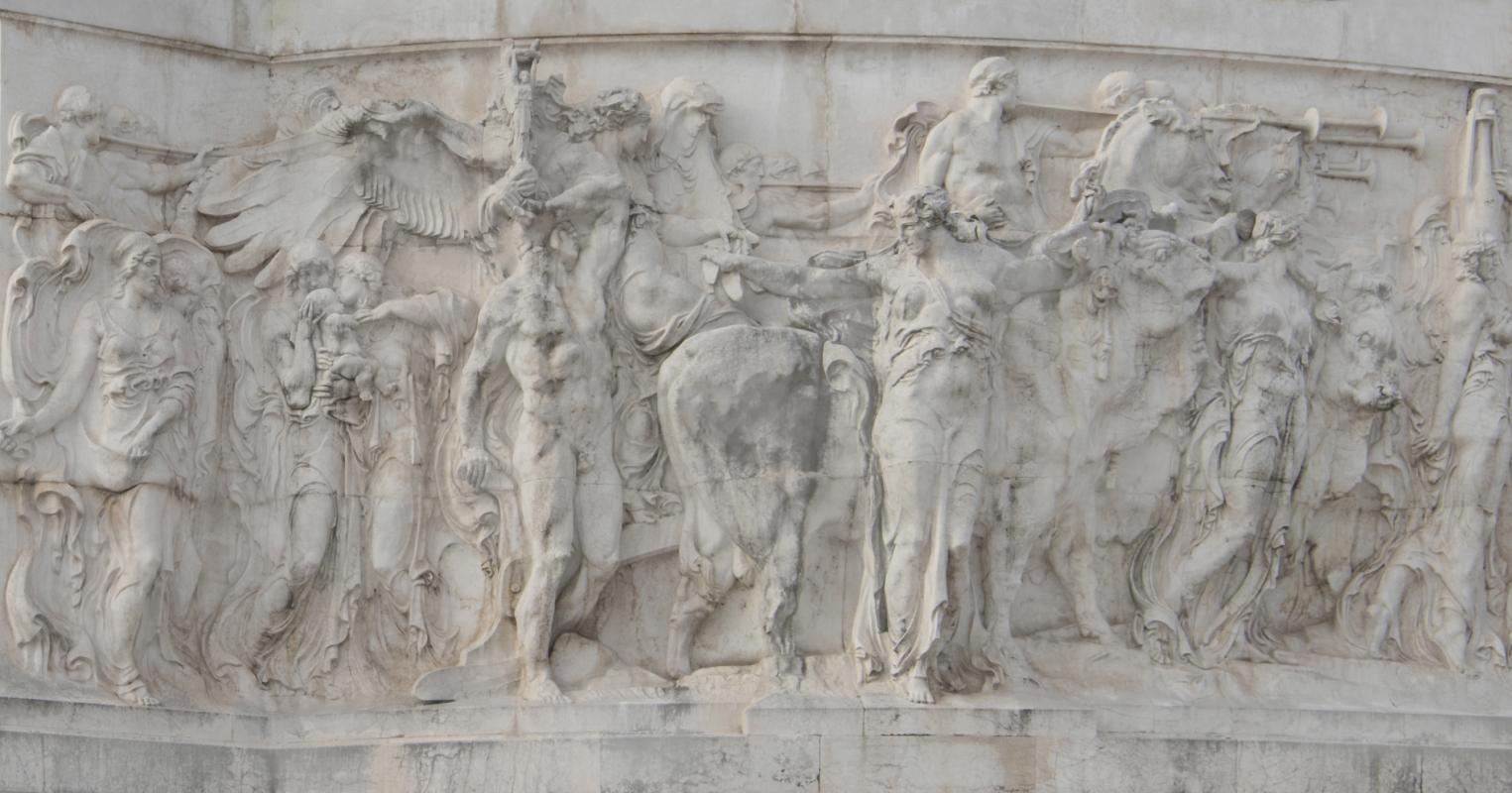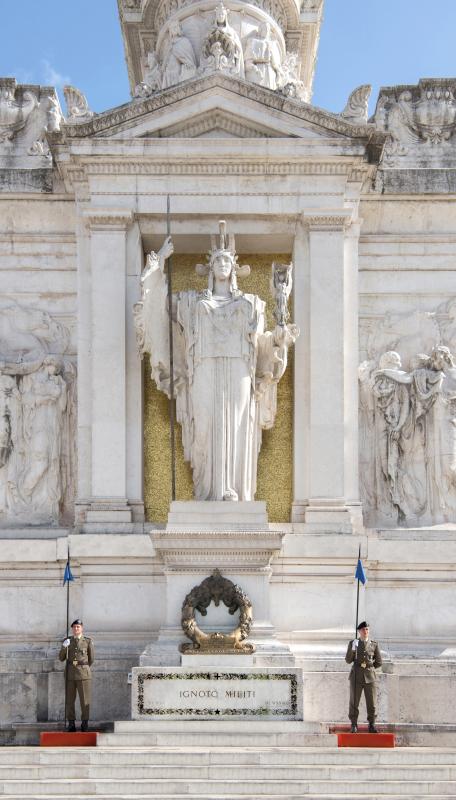The Altar of the Fatherland
The Altar of the Fatherland, a votive altar to the nation and its values, is decorated by artist Angelo Zanelli
The Altar of the Fatherland is a large votive altar dedicated to the Italian nation located in the heart of the Vittoriano. In fact, the altar stands on the first terrace and is sometimes identified with the entire monument. Designed by Giuseppe Sacconi, it was decorated by the Lombard sculptor Angelo Zanelli (1879-1942). Having won the competition many years after it was launched in 1908, Zanelli only finished the work in 1925.
The Altar of the Fatherland has the statue of The Goddess Rome in the centre and two bas-reliefs on the sides: both conceived as processions, they depict The Love of Country that fights and wins and The Work that builds and fecundates.
The Love of the Fatherland is on the western side. From the right towards the centre, we see an inscription which celebrates the importance of the force of arms for defending the homeland, some priestesses and a group of men and women engaged in carrying a beam from which an altar hangs.
The procession continues with The Genius of the Love of the Fatherland and the Hero with his hand on the hilt of the Titans' sword, both seated on a triumphal chariot. The frieze is closed by young people with banners and vestals with crowns of oak, laurel and myrtle.
The Work that builds and fecundates is located on the eastern side of the Altar of the Fatherland, facing Via dei Fori Imperiali. Moving from the left towards the centre, we see the inscription, which underlines the importance of work for the welfare of the country, a family with babies and the representation of industrial activities: a group made up of sturdy young people carries a beam from which an anvil hangs.
Then we have The Genius of work – that is, a figure with a statuette of Victory in his hand – looming over The Fatigue, a man in the act of putting his hand to his forehead to wipe away the sweat. Genius and Fatigue drive a plough pulled by a gigantic and mighty ox. A refined female figure stands out on the profile of the ox, The Sowing.
The procession continues with four other female figures: the figures personify agricultural activities, Irrigation with water amphorae, the Grape Harvest with bunches of grapes, Reaping with a sheaf of wheat and Rearing with a lamb.
Originally from the province of Brescia, Zanelli won the competition when he was just over thirty. With a classicist background, the artist soon evolved toward Liberty and Symbolism. In the frieze, and even more so in The Goddess Rome, he shows himself capable of combining the profound knowledge of the ancient world with the international trends of the moment, in particular with the Vienna Secession and Gustav Klimt, according to a line pursued at the Vittoriano also by Giulio Bargellini.

